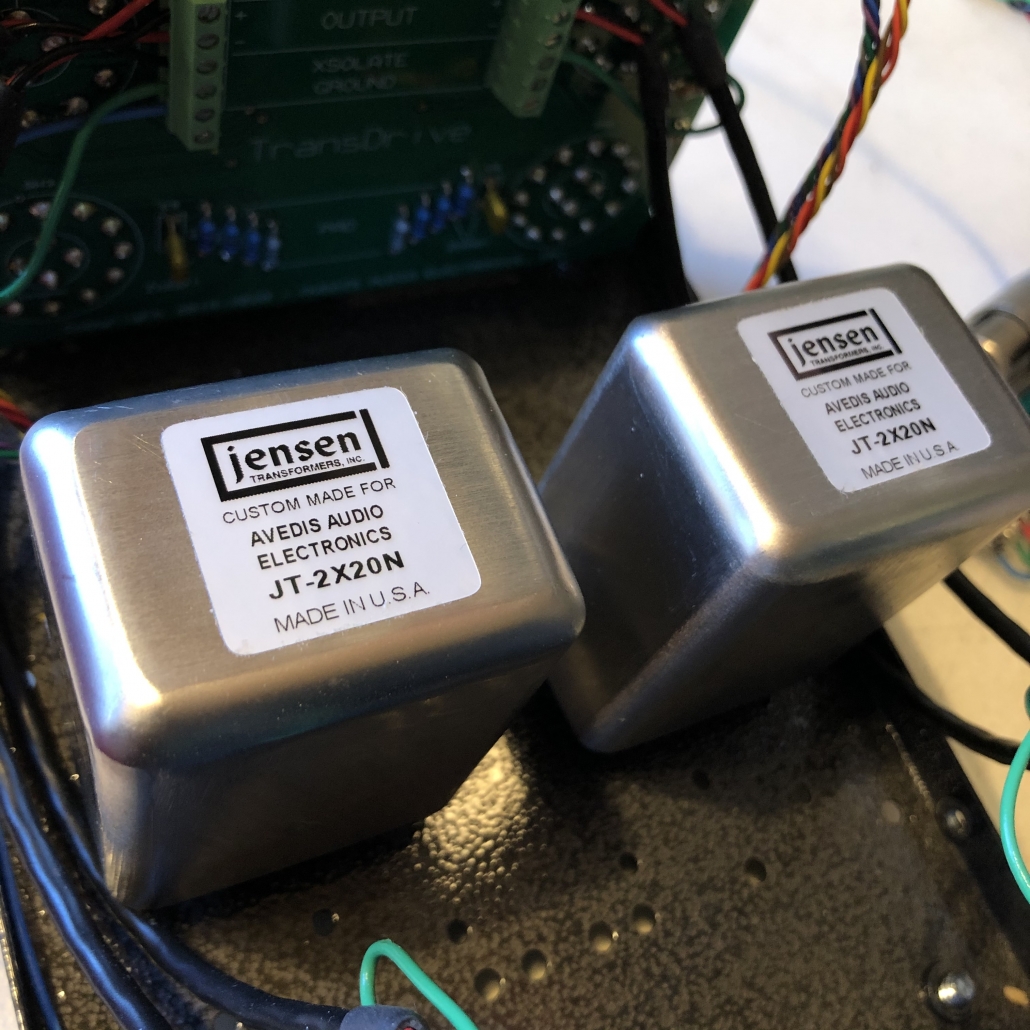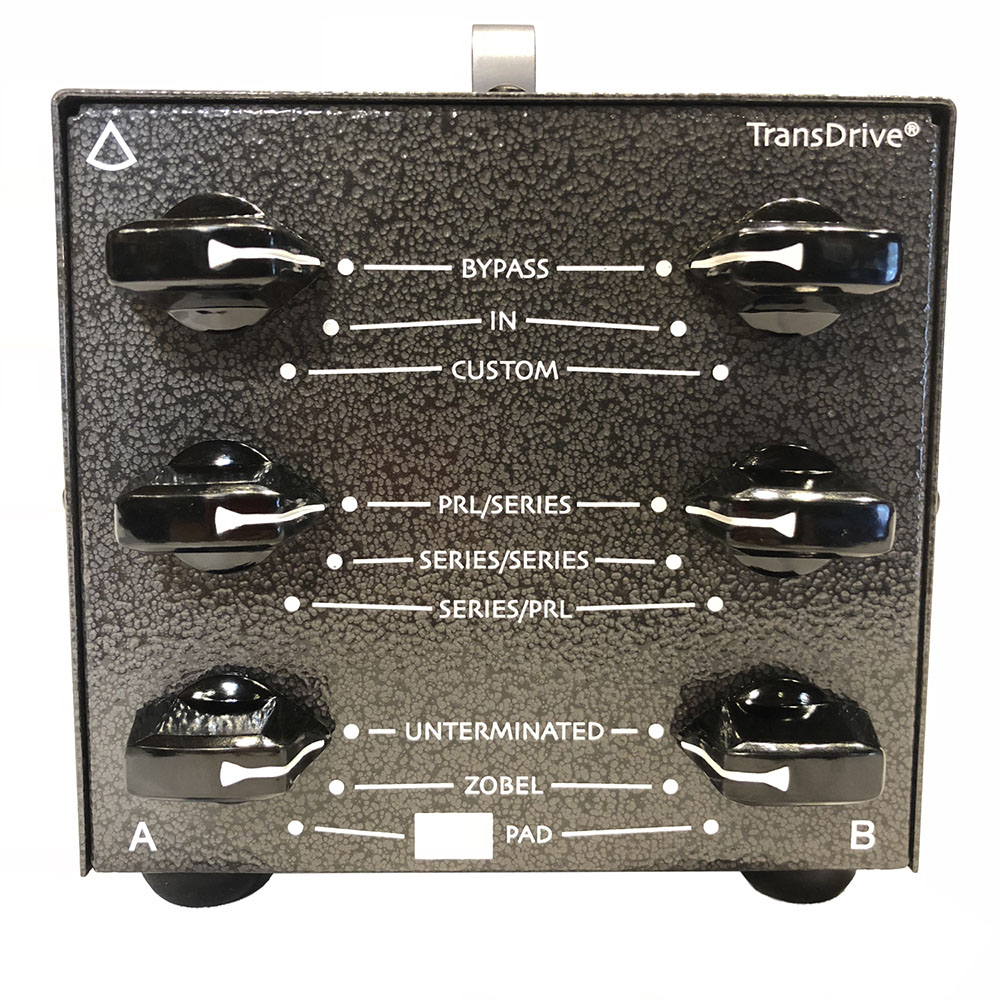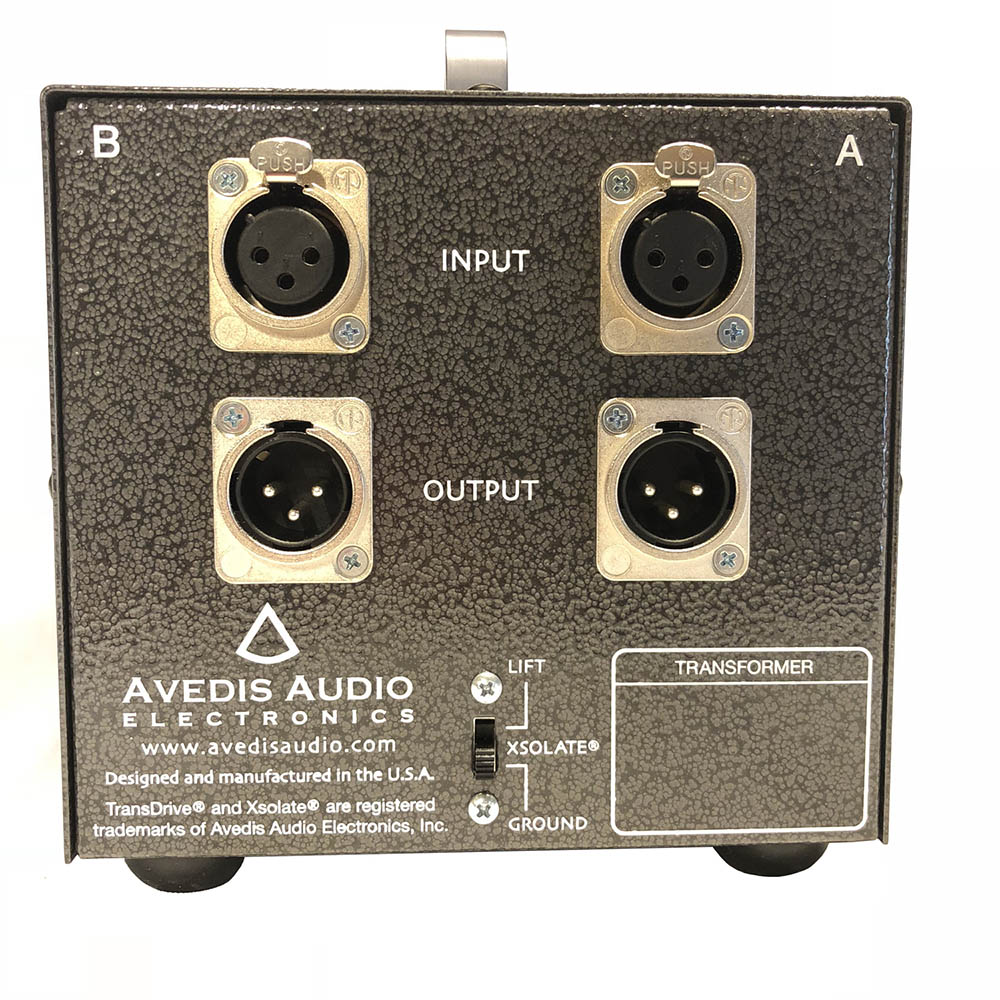Out of Stock
TransDrive®
Features
- Passive transformer interface with True Bypass using a pair of custom Jensen® Transformers
- CUSTOM setting for more transformer saturation
- Parallel & Series ratio selection
- Can mount a variety of transformers
- Neutrik® XLR input and outputs
- Steel chassis with durable finish
- Large rubber feet and solid handle for minimum vibration
- -10dB output PAD to push input even more (customizable)
- Unterminated or Zobel Network load switchable
- Patented Xsolate® Ground Lift System safely isolates ground
The TransDrive allows the user to interface with passive audio transformers for the purpose of attaining a specific and music signature sound. It can house a variety of different audio transformers and allows the user to change parameters with a simple selection of a rotary switch. The TransDrive includes a hard Bypass for comparing the difference the transformer is making in the chain.
TransDrive®
| Ratio Gain/Loss | 1:2 = +6dB, 1:1 = 0dB, 2:1 = -6dB |
| Frequency Response | 3Hz – 60kHz (-1dB) |
| Input Impedance @ 600 ohm load | 1:2 = 150 ohm, 1:1 = 600 ohm, 2:1 = 2400 ohm |
| Distortion | Input dependent |
| Noise | Passive; same as source |
| Chassis | Steel |
| XLR pins | Pin 1 = shield, Pin 2 = Hot+, Pin 3 = Cold- |
| Dimensions | 5.5″width, 5″ height, 7″ length (5.5″ x 6″ x 8.5″ w/knobs and rubber feet) |
| Weight | 10 lbs 8 oz (4.8 kgs) Western Electric 111C |
FAQ
What is the level loss; and would I need a gain make-up amplifier?
The level loss depends on the transformer itself. Some transformers have more than one coil which allows for more than one configuration, so you may not even have a level loss. There may be level gain, depending on the TURNS RATIO of the transformer. More on this in the PRL/SERIES section below.
What is the CUSTOM setting?
The CUSTOM setting puts audio through two additional transformers which are small and mounted on the PCB inside. Rather than the traditional way of passing audio through it from Primary to Secondary, we use it as a common mode inductive element. What this means is that audio passing through it gets mashed up and the distortion created with peaks is natural and sounds useful. You can change the characteristics of the distortion by selecting different parallel and series ratios adjustable with the second controls.
What do the settings PRL/SERIES do?
This means PARALLEL and SERIES, and it’s a way of setting up the primary (the input) and secondary (the output) ratios. A transformer with at least two primary and two secondary windings would be preferred and this would give us some options as follows:
With the first position PRL/SERIES, the TransDrive would set up the primary in PARALLEL, meaning that the two windings double up, and the secondary would be in SERIES, meaning that the windings are one after each other. This would be a 1:2 ratio and as a rule of audio calculation, anytime you double voltage, you get a step up gain of +6dB.
The second setting is SERIES/SERIES sets up the windings in an equal ratio of 1:1, thereby no gain is attained, although some small amount of level loss is expected due to insertion loss. You can expect a near unity gain in this setting.
The third setting is SERIES/PRL, which the TransDrive® set up the primary in SERIES, and the secondary in PARALLEL, essentially the opposite of the first position for a 2:1 ratio. Following the inverse of the rule, halving the audio voltage would yield a loss -6dB.
So why not just use a transformer that has a high step up ratio?
In audio, just like in physics, you don’t get something for nothing and there is always an exchange in the forms of energy. For example, a transformer with a ratio of 1:10 would step up your audio level by +20dB. The cost of this higher voltage is higher output impedance. Think of a water flowing through a straw versus through a garden hose. Both can have the same amount of output pressure (voltage) but the garden hose will have more water output (current). The straw is said to have a higher impedance, or resistance, to the water. More on impedance ratios in the next question.
What’s the impedance of the TransDrive? Is it 600 ohms?
We shall first establish some simple electronics rules.
Transformers do not have an intrinsic input impedance; transformers have a reflective impedance. This is an important point often misunderstood in the pro-audio world.
A transformer’s input impedance is dependent on the load on its secondary, whether resistive or reactive.
Also, a transformer’s impedance is related to the square of its turns ratio.
For example, if we set up the TransDrive at PRL/SERIES using a 1:2 ratio transformer loaded, then we can expect an audio gain of +6dB. To find out what the input impedance is, we square the ratio numbers. 1 squared is still 1, and 2 squared is 4. So if there’s a load of 600 ohms on the secondary, the input impedance looking into the primary would look like 150 ohms. This would be a heavy load for the average pro-audio devices output.
In another example, the Apogee Symphony I/O MkII specifications say the line input impedance is 10k ohms, which is the same for the line input of older Neve console modules. If the TransDrive contains transformers with a 1:2 ratio, with the secondary loaded at 10k ohms going into these units, then the primary input impedance would be 2500 ohms, or 2.5k ohms. This is easier to drive for the average pro audio devices output.
The 600 ohms was established back in the days of analog telephones as the nominal impedance between transmission lines. Because communication across the country was far more important than recording or reproducing music, the audio world borrowed transformers from the telephone industry up until the 1970s. Today, the idea of pro-audio gear having 600 ohms has stuck; even though it has nothing to do with how pro-audio must work.
Can you explain what UNTERMINATED means?
UNTERMINATED simply means that there is no load on the secondary of the transformer, thereby relying on the following device, such as a DAW or an outboard unit, to load it. Unterminated, the transformer is naked and natural.
Transformers physically have some resistance in their windings, because it’s made up of long and thin wires. Its bobbin is wound around magnetic material and this makes it inductive as the audio passing through it. And because it is also wound around itself, with primary and secondary all bundled up tight, there is also a capacitive relationship.
All this adds up to the reactive element of the transformer and it is usually measured and heard as a ringing or “overshoot” in the high frequencies. The frequency and the level of overshoot depend on many factors and different transformers have different reactance. Most transformers designed for audio usually have the peak of the overshoot in the higher frequencies, outside of 20kHz – but it doesn’t mean you won’t hear it.
You may or may not like the sound of transformer overshoot. If you don’t like it, then there is a solution called the Zobel network. More on this in the next question.
What is a Zobel and what does it do?
A Zobel network removes the ringing overshoot of the transformer. It removes it by having been tuned to the opposite of the ringing frequency, thereby canceling out the peak. It may not remove all of it since there may be more than one area of high frequency ringing, but it will do enough to dampen the burst of the high end.
We can tune a Zobel network for each transformer type after careful analysis of the top end. The Zobel can even be a 600 ohm load if that’s what it takes. There are no rules and experimenting is certainly an option.
Why is there a PAD?
Some users want to overdrive the input of the transformer. But the issue may be that some transformers just have a lot of headroom before you notice any distortion. So the PAD function puts a resistive PAD on the output of the transformer and allowing the user to drive the input of the transformer with a larger signal. We can customize the attenuation of the PAD depending on what we want to achieve, while keeping the output impedance as low as possible.
Can you use a Neve 31267 Line input transformer?
Is it made Lead-free?
TransDrive housing and PCB circuit board is made Lead-free, however vintage transformers used inside may contain leaded (Pb) solder. So we must warn about it:
WARNING: This product contains chemicals known to the State of California to cause cancer and birth defects or other reproductive harm.





